
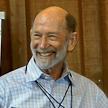
Michael Soulé, PhD.is Professor Emeritus of Environmental Studies, University of California, Santa Cruz. He has written and edited nine books on biology, conservation biology, and the social and policy context of conservation. He has published more than 170 articles on population and evolutionary biology, fluctuating asymmetry, population genetics, island biogeography, environmental studies, biodiversity policy, nature conservation, and ethics.
Michael was a founder of the Society for Conservation Biology and The Wildlands Project and has been the president of both. Now living in Colorado, Michael speaks and writes on morality, conservation, serves on the boards of several conservation organizations, including the Wildlands Project, and consults internationally on nature protection. He is also co-chair of the Science Council for Australia's WildCountry Project and is completing a book about conservation and human nature and practical means of saving the world.
How did you first start working on biological corridors?
I was talking to Arne Naess, founder of the deep ecology movement, in early 1991 about what needed to be done next. Connecting up all the wild areas was on the top of our minds. That led to a letter I sent to Dave Foreman about our plans, which Dave really liked. This led to the initiation of the organization. It was our idea to create the linkages needed to protect biodiversity, not only in America but around the world. We formed the organization to focus on the three C's: connectivity, carnivores, and cores, all of which are essential for protecting what's left of our biodiversity. We then met at [Doug] Tompkins' house (the founder of ESPRIT clothing and famous conservation entrepreneur in Chile), which led to the formation of the Wildlands Project.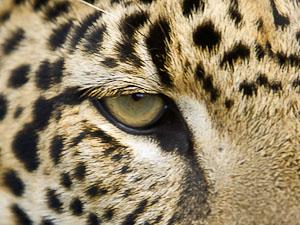
What was the reason for focusing on connectivity?
It was obvious to us, based on principles of ecology and island biogeography. Empirical studies showed that the smaller the area, the fewer species could exist. Studies of national parks in the US showed a perfect correlation between the rate of extinction of mammals in our national parks and the size and degree of isolation of the parks. Isolation is death to the flora and fauna in wild areas. Once the national park has become an island surrounded by development the first thing that happens is the disappearance of the larger, wide-ranging animals, particularly the carnivores. Once the large carnivores disappear everything starts to unravel as we see in Yellowstone and the return of the wolves. Everything was starting to unravel without the wolves. There are thousands of examples of this from around the world.
Almost twenty years ago, a group of activists and scientists got together to form the Wildlands Project. We recently chnaged the name to Wildlands Network because we are focusing our efforts on networks of core areas and connectivity, as well as on networks of people and conservation groups. We are working to create the kind of consensus and cooperation and large-scale-continental-scale-thinking that is necessary to develop a system of corridors.
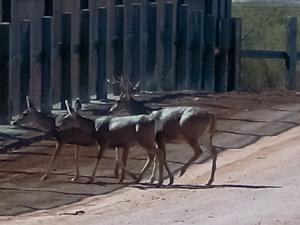
There are several strands. One is the recognition by ecologists and biogeographers that the number of species that could be maintained in an area was dependent on size of the area. Connecting wild areas, natural areas, and habitat areas allows species and process to flow between areas.Connecting wild areas or parks with corridors to allow movement between them magnifies and multiplies the success of species, because it increases the area of land or water available. Connections multiply the value of the protected area greatly and especially so in the face of climate change where plants and animals have to move to persist. With climate and habitat changing dramatically, they have to be able to reach other areas that are more amendable to their physiology.
You have written many articles on this, but what is conservation biology?
Conservation biology is a synthetic discipline, or an applied discipline that comprises many other disciplines. It is analogous to cancer biology-a physician or public health professional will say that cancer biology is all of the fields that might be relevant for curing cancer. It involves epidemiology, pharmacology, surgery, anesthesia, molecular biology, biochemistry, and counseling. There are social sciences involved as well as biological and medical sciences. All of these fields are very important in cancer biology. It is multidisciplinary, containing many areas of study and research and applications. The same thing applies to conservation biology-it comprises research and theories from many fields. Theories from biology and the social sciences contribute to the solution of the extinction crisis, for example.
What is the importance of conservation biology today? What ramifications does species loss have for us and the natural environment?
Nature is dying today. The rate at which it is dying is accelerating as we fragment and destroy habitats around the world. The ocean is overfished and polluted, and the atmosphere is rapidly being changed by human activity. Human activity is killing everything because it is out of control. Conservation biology is more relevant. That doesn’t mean it is working, because there has to be essentially a way to save nature through people. People are causing the problems, so people and the institutions they create will have to fix the problems. We are seeing a huge increase in the number of conservation organizations around the world that are dedicated to protecting nature. A lot of them are increasingly based on science or at least informed by science. National parks were thought of as the way to save nature, and they are now seen as one of the many components, as they are isolated by definition. Isolated parks are not going to do much to preserve the diversity of species. If we want to save nature, and saving nature is part of the solution to stopping the demise of civilization due to climate change, we must base those efforts on science as well. One of the major impacts of climate change on nature is a shift in the distribution and diversity of species in a given area. Could people live without nature? Well, yes, they could live in shells that are air-conditioned. People in Bombay or New York live without nature. Some people can live without nature. There are some people who love nature so much that it really would become pretty morose. Do we want to destroy creation, or do we want to maintain life on this planet? It is an ethical and moral question as much as it is a scientific question.
What are keystone predators and species ?
We have invented lot of different categories to describe species according to their function. Keystone species are one of the most important ones. A keystone species is a species that, when removed, causes ecosystems to collapse, because interactions with other species are critical for maintaining this diversity and the resilience of ecosystems. If you remove keystone species like lions or wolves, or in many cases much smaller creatures like prairie dogs and pollinators, ecosystems unravel. It may take time for people to see that happen. It took people fifty years or so in Yellowstone to begin actually seeing the process of degradation occurring in the park. 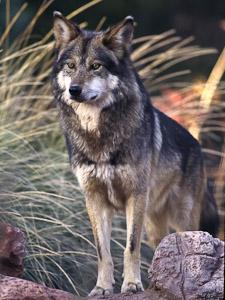
There are two main effects that keystone carnivores have on preventing degraded processes. One is called herbivore release, and the other is called mesopredator release. For example, the eastern United States is overrun by white-tailed deer. People can’t even have gardens in many parts of the Midwest and East. The termination of hunting by humans, which had replaced wolves and cougars, resulted in the collapse of the soybean and corn farming industries within three to five years because of the inability to get rid of the deer. They are also destroying and changing the structure of forests throughout the East. They favor some species of tree seedlings over others. The composition of ecosystems is drastically altered and simplified by over-browsing and overgrazing by ungulates when large predators are removed. That is what is called herbivore release – their populations explode in the absence of predators.
Mesopredator release is somewhat analogous. When we studied coyotes in the canyons of San Diego in the 1980s, we discovered that the canyons the coyotes still visited were healthier. There were more species of native birds than in those canyons that coyotes couldn’t access because they were isolated from the surrounding rural areas. That pattern has been seen around the world many times, where the large predators are removed and the populations of small predators, including raccoons, foxes and birds like ravens, jays, and robins explode. We call these smaller carnivores meso-sized predators. Their populations explode because there is no cap on predation or behavioral inhibition of their hunting. The smaller animals begin to go extinct in the area, as we saw in San Diego. When coyotes are present, housecats and other predators are much less active and don’t hunt as much. In this sense, it turns out that coyotes are good for native birds and ground nesting birds. These processes are called trophic cascades. You remove one part of the ecosystem, and it causes a ripple effect through other parts of the ecosystem that depended on the absent part. This can affect both flora and fauna.
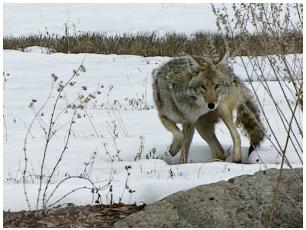
How can we connect people to the corridors and the environment so they can get involved?
I don't know. That is what we are trying to do. We are trying to lay the concepts for everybody from science advisors on down to local ranchers. It's not that hard actually. It is something that people haven't thought of. It has been around in science for half a century. It takes a long time for concepts to be understood by the public. Fortunately, connectivity of corridors doesn't illicit too much opposition, except for those who see any attempt to protect nature as attempts to reduce their freedom. Some people don't like these ideas because they restrict their recreation.
There are various estimates regarding the current rate of extinction of species with 30,000 being the current common estimate. What do you believe to be the current rate of extinction?
I personally have not gone into that literature. I have seen the estimates that you are talking about and I agree with them. But if anything, they are conservative, because they often don’t include invertebrates – insects and creatures that don’t have backbones. We have limited information about those taxonomic groups. Consider the degree to which we are destroying habitats around the world by cattle ranching and overgrazing, not to mention clear-cutting of forests. Look at the pollution of habitats and destruction of aquatic habitats and marine habitats. It is probably an underestimate.
With a growing human population, what do you believe are the best steps for the general public to take to protect biodiversity and lower the extinction rate?
If anybody had come up to the answer to that, they would be famous. No one knows how to solve the extinction crisis. We have tried all sorts of approaches, including economic approaches, like the idea of paying for ecosystem services. An ecosystem service payment draws on the concept that if people knew the value to our economy of clean air, clean water, top soils, and all the other ecosystem services, then they wouldn’t behave the way they do. That shows complete ignorance of human nature. People are basically selfish. They have other emotions, like compassion, but people act in the interest of themselves, their family or their corporation. The ideas that the economist has come up with to solve these problems are not realistic.
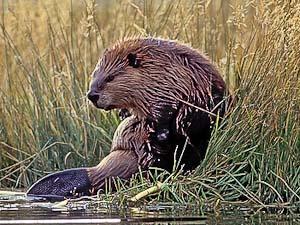
Our country did a remarkable thing back in the ‘70s by passing a bunch of good environmental laws, including the Endangered Species Act and Clean Water Act. They are good laws, and they helped. They are continuingly nibbled away at by Congress because politicians have their special interests and local needs for people who demand a strong economy and jobs. We have seen salmon wiped out in many parts of the Pacific Ocean because of this nibbling-away effect of land uses changes and lobbying. Fishermen have been trying to catch as many fish as they can. The top-down effect is the removal of keystone predators. So I am not that optimistic. However, I think it is still possible to arrest the extinction crisis, but we will have to overcome certain aspects of human nature, such as greed and selfishness. It will take a series of horrible natural catastrophes that affect people as well as nature. We are already starting to see them. This sounds pretty dismal, but if we are fortunate enough to have several major catastrophes, with weather and global warming, then people will begin to think about the environment. Politicians will be forced to think about the environment and deal, to some extent, with the global climate crisis. Even though the climate emergency affects people directly and could well end civilization, destroy the arctic ice pack, melt glaciers all over the world and affect the amount of freshwater available, they are still very slow to act because of another human sin: denial. They would rather not think about it.
Photos are copyright protected and may not be reproduced without permission. Copyright information for the photos is as follows: (1) Michael Soulé, photo courtesy of Michael Soulé (2) Jaguar Eye, photo courtesy of Karl Daniels, (3) Deer at Wall, photo courtesy Defenders of Wildlife, (4) Mexican Wolf, photo courtesy of Phoenix Zoo, (5) New Mexico Coyote, photo courtesy of Tara Waters Lumpkin (6) Wild LifeLines, photo courtesy of the Wildlands Network, (7) beaver, photo courtesy of Anthony Hathaway